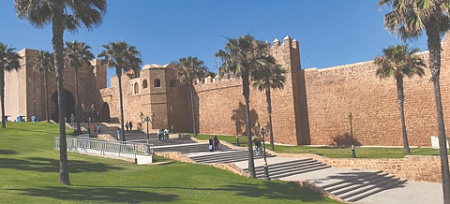
In a display of national ambition, Morocco is undergoing a sweeping transformation, powered by massive infrastructure projects and a booming economy. With the 2030 FIFA World Cup, which it will co-host with Spain and Portugal, on the horizon, the North African kingdom is a whirl of activity. From the Atlantic coast to the Atlas Mountains, the skyline is dotted with construction cranes, signaling a nation rapidly building for its future on the global stage.
The engine of this growth is a formidable tourism sector, which contributed nearly $11 billion to the economy in 2024, shattering all previous records. Rabat is aiming to surpass $15 billion in the coming year, positioning itself to challenge Egypt’s long-held status as the region’s top tourist destination. This boom is not just about revenue; it’s a vital source of employment, supporting over 827,000 jobs and creating tens of thousands of new opportunities as hotels and resorts expand to meet surging international demand.
At the heart of Morocco’s preparations for 2030 is the planned “Hassan II” mega-stadium in Casablanca. Set to be the largest in the world with a capacity of 115,000 spectators, this architectural marvel is more than just a sports venue; it is a statement of intent. The project, alongside the comprehensive reconstruction of existing stadiums and the most developed road network in Africa, underscores the kingdom’s immense investment in its future. This football-driven development is a point of national pride, especially after the national team’s historic fourth-place finish in the 2022 World Cup.
This rapid development is built on a foundation of unique political and social stability. The national motto, “Faith, Homeland, King,” is a visible and deeply felt sentiment throughout the country. While public criticism of politicians is common, the king is revered as the father of the nation, an untouchable and unifying figure. This widespread respect for the monarchy provides a crucial pillar of continuity and support for the government’s long-term strategic vision.
Beyond the construction sites, Morocco’s allure lies in its rich diversity. It offers a stark contrast between the vibrant, sprawling commercial hub of Casablanca and the meticulously clean, green, and historic capital, Rabat. Travelers are captivated by the iconic blue-washed streets of Chefchaouen, the ancient medinas of Fes and Marrakech, and the wind-swept beaches of Essaouira, which attract a growing number of tourists from around the world. These timeless attractions provide a cultural counterpoint to the nation’s modernizing sprint.
For visitors, the kingdom offers a complex and rewarding experience. The Moroccan people are known for their hospitality, and the local cuisine, from savory tagines to traditional mint tea, is a highlight. However, travelers are advised to remain vigilant, particularly in bustling tourist centers where aggressive sales tactics are common. Minor seismic tremors are also a part of life. These small realities do little to dim the appeal of a nation in dynamic motion, confidently blending its ancient heritage with bold aspirations for the future.
